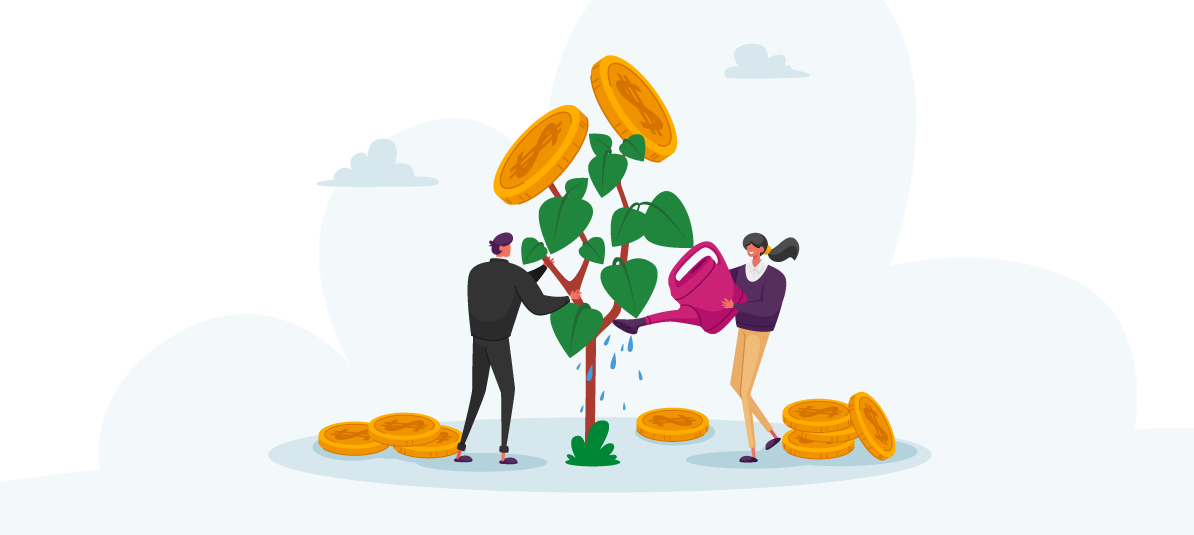From saver to investor: when to take the plunge

When is the right time to go from saver to investor? How much should you invest and how should you do it? What if you also have some debt? These are some of the most common doubts that arise before taking the final step.
Build up your contingency cushion and invest afterwards
Saving is not enough to secure your future, but every investment carries risk. The way to balance these two extremes is to follow one of the few golden rules of personal finance: invest only the money you do not need or can afford to lose.
In practical terms, this means that before you invest you should build up a good cushion for emergencies. In other words, have money set aside to deal with unforeseen events such as a car breakdown and other unexpected expenses. That way you will not have to halt your savings and investment plan at the slightest setback.
How much contingency money do you need in your emergency fund? The recommended minimum is three months of your fixed expenses. The most widespread advice is to raise the amount to six months of your outgoings. If you need help getting started, this article gives you step-by-step instructions on how to set up your emergency fund.
How do you start investing once you have your financial cushion?
Once you have accumulated the money for your emergency fund, you can go from saver to investor.
Where should you start investing? The reality is that today there are many investment alternatives for all tastes and investment profiles.
The best thing is that you don’t need to wait until you have €5,000 or more to start investing. If you are starting from scratch, there are products with which you can invest the money you are able to save every month, in other words, convert your savings directly into investments.
PIAS are an example of a product specifically designed for saving and investing small amounts on a monthly basis. There are also investment fund portfolios that allow monthly contributions, as well as pension plans or unit linked plans, for example.
Is it possible to save and invest at the same time?
Saving and investing do not have to be mutually exclusive. You can save and invest at the same time if you plan accordingly. The key is your monthly savings capacity and your starting point.
If you have some money saved up, you can allocate part of the money to savings to fill up your emergency fund and the rest to investment. With this strategy it will take you a little longer to build your contingency cushion, but you will take better advantage of the compound interest of your investments.
Similarly, if you have a high savings capacity, you could also combine savings and investment. A good starting point would be to allocate 70% of the money to savings and the remaining 30% to investment until you have a six-month reserve fund.
As an example, a person with a saving capacity of 250 euros per month could save 175 euros every month and invest the 75 euros systematically.
What about debt?
Debt is a bad traveling companion and one of the main causes of financial stress. If you accumulate some it is normal to wonder whether it is better to end the debt or start investing.
The answer depends mainly on the type of debt it is and the type of investment you have in mind. As with the question of when to start investing, here too there is a golden rule: choose the alternative with the highest interest rate.
To make it easier to understand, if you have a credit card debt that charges you 18% interest and the average return you expect to get from your investment is 7%, start with the debt and vice versa.
With this advice in mind, the general recommendation is:
- Pay off debt if it has very high interest rates.
- Invest if debt interest rates are low.
Is it possible to pay off debt and invest at the same time? Yes, there is also a balanced option that allows you to make progress towards both goals. In this case there are no recommended percentages for each item because everything depends on the composition of the debt.
It is advisable to start paying off the debts that have the highest interest rate. Once you have paid off the first debt, you can use the monthly money that has been freed up to pay the next debt until all of them are paid off.
And after that? Ideally, you should invest the capital you were using to pay off debts, or at least consider how to use it to get closer to your life and financial goals.


